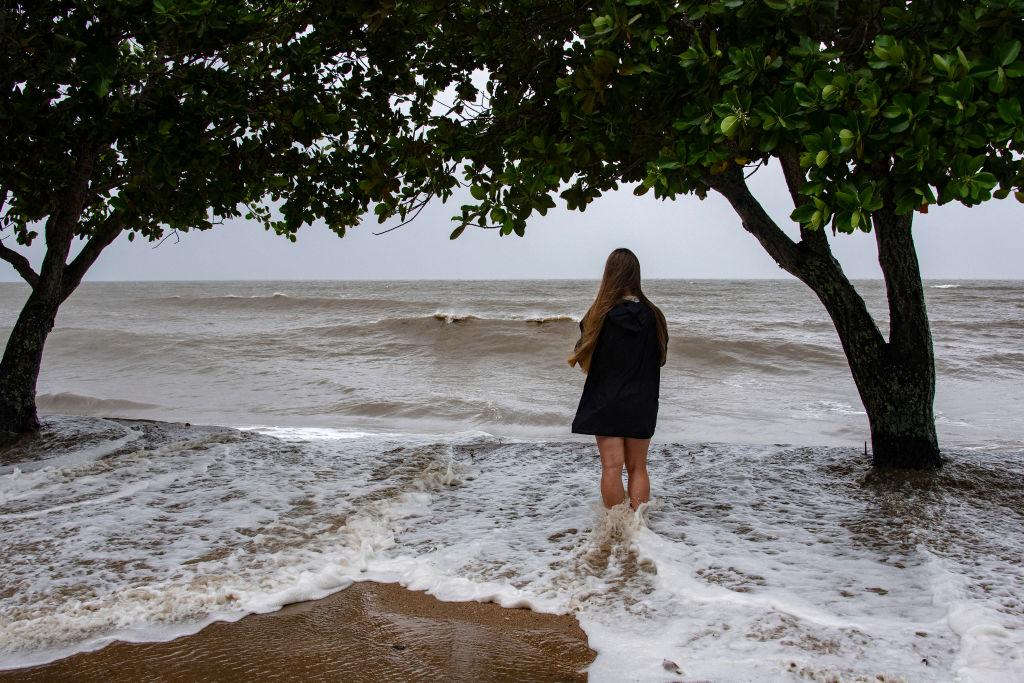Another cyclone threat may be looming in far north Queensland, weeks after wild weather lashed the region.
Help is still arriving for the far north after record flooding caused by Tropical Cyclone Jasper, with a A$24 million (US$16 million) tourism recovery and resilience program unveiled on Jan. 10.
Prime Minister Anthony Albanese and Queensland Premier Steven Miles were in Cairns to announce the additional funding that will further support local tourism, clean-up efforts and specialised recovery staff.
“This beautiful place has been ravaged by this disaster, and we want to help far north Queensland get back on its feet as soon as possible,” Mr. Albanese said.
But more heavy downpours are set to hit the far north with a monsoon trough expected to develop in the Gulf of Carpentaria and turn into a tropical low by Friday.
“From Sunday there is a low chance of ... [the tropical low] strengthening into a tropical cyclone,” the Bureau of Meteorology said on its website.
The chance of a cyclone forming depends on the movement of another system west of Darwin called 03U.
“If the other one (03U) doesn’t develop into a tropical cyclone then there is a slightly increased risk the other one in the Gulf (will develop), given there will be more energy in the trough system,” a bureau spokesman told AAP.
Even if it does not form into a cyclone, a tropical low in the Gulf will bring heavy rain to far north regions already reeling from devastating flooding after Jasper hit less than a month ago.
“Along coastal parts of the Gulf, daily falls of 100mm to 200mm wouldn’t be out of the question,” the bureau spokesman said.
The far north is still recovering from December’s record downpours, with Mr. Albanese and the premier flying over the flood-hit Cape Tribulation on Jan. 9.
More than 29,000 people in the far north have received a total of $5 million in hardship payments to date since the floods hit.
The prime minister pledged Australian Defence Force support for the devastated area before Wednesday’s funding announcement.
As part of the A$24.25 million (US$16.27 million) package, grants will be available for far north tourism operators hit hard by the disaster.
It will also fund a marketing campaign to attract more visitors back to the region.
Three cyclone resilience officers will be appointed to work with local industries, councils and farmers to support the recovery.
Recovery project managers will also be assigned to the worst hit areas, Wujal Wujal and Douglas Shire councils north of Cairns.
Work is still underway to clear the far north’s roads with the major Captain Cook Highway set to reopen between Ellis Beach and Port Douglas on January 20.
About 30,000 tonnes of mud and debris has already been removed from the road, with 15 trucks making about 100 trips a day.
The highway provides road access to flood-hit Douglas Shire’s major tourism attractions Port Douglas, the Daintree and Cape Tribulation.
Tourism makes up more than 80 per cent of the Douglas Shire economy, injecting more than A$611 million (US$409 million) every year and creating 2600 jobs.
“Our key focus now is getting businesses north of the Daintree River and south of Cape Tribulation back on their feet as soon as possible (but) there’s a long road to recovery ahead,” Douglas Shire Mayor Michael Kerr said.
A single lane won’t be open at the nearby Palmerston Highway until mid-February.







